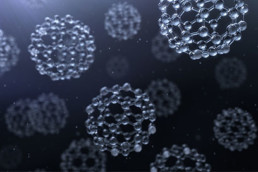In the last century, the advancement of technology in industrial manufacturing has been unparalleled, with humanity developing new processes and widening the scope of raw material usage in a way that has proven wrong even the most skeptic of forecasts in previous years. We have now mastered that which we were only beginning to understand a few decades ago, and every passing day brings a new possibility to shed light on the concepts that are still unsolved.
Not even the field of industrial cleaning has been ignored in this global chemical phenomenon of expansion, with a plethora of options being made available in the form of high-performance, specialized cleaning solutions; truly, when it comes to cleaners we’re actually quite spoiled for choice with the wide range of products present in the market.
Yet there is something we still haven’t been able to tackle entirely when it comes to the industrial world, and which could become an extremely big risk if we don’t take care of it while we can – the consequences of contamination to our world and, most importantly, to our health.
But what is the link between modern cleaning agents and the protection of the environment, exactly?
The magic of green surface-active agents in cleaners
The greatest strength of surface-active agents – surfactants, as they are most commonly referred to – is that they do not come in one single variety that is aimed for one narrow range of uses. Surfactants are anything if not flexible, in fact, and they can actually represent some of the greenest components in cleaners and their formulations.
Anionic and non-ionic surfactants are extremely useful at removing dirt and grease from fabrics and surfaces due to their ability to act as wetting agents and easily disperse the solid particles that may be adhered to them; non-ionic surfactants are an especially potent addition to cleaners thanks to their low interaction with the hardness of water (calcium and magnesium ions), and their low production of foam. Finally, positively-charged cationic surfactants can be added to enhance the antibacterial action of the formulation.
The interesting aspect about surfactants is that they can just as easily be the main ingredient of a detergent or industrial cleaning product as they can represent the auxiliary foaming, dispersing or softening agents in the formulation beside it – their specialization is endless. Most importantly, however, they have been made greatly biodegradable and safe in the last decades, and are crucial in modern cleaning solutions.
A necessary challenge – replacing harmful solvents with green ones
Toluene, methyl ethyl ketone (MEK), mineral spirits and aromatics… what do all of these solvents have in common? They’re all contaminants, to begin with. Believe it or not, the previous generation of industrial chemical manufacturing made extensive and long-term use of dangerous, toxic and even carcinogenic substances in great quantity, and products like those found in industrial cleaning were filled with deadly chemicals.
It wasn’t until the intervention of international environmental organizations and implementation of protocols and acts that industries were forced to comply to finding a new, green alternative to these undesirable compounds. After all, cleaning solutions must especially be accompanied with safe solvent systems to ensure the safety of the animals, people and environment that are in contact with them.
"Cleaning agents are among the most commonly found chemicals in wastewater, which means that we should only ever use green materials to formulate them. Substances that can pollute a water source must be excluded from any formulation."
— Ryan Esner, Environmental Fluids CEO
Nevertheless, green engineering and chemistry have already begun to take care of this issue – day by day, methods such as those involving aqueous chemicals, supercritical fluids and even the introduction of solvent-free cleaning solutions have changed the landscape of industrial cleaning, bringing hope to a previously desperate situation. Never has the cleaning industry had this many options when it comes to going green, and things are starting to look bright for the environment.
One thing’s for sure: we know that our planet will be thankful once we take the plunge and go all the way with green surfactants and solvents.



